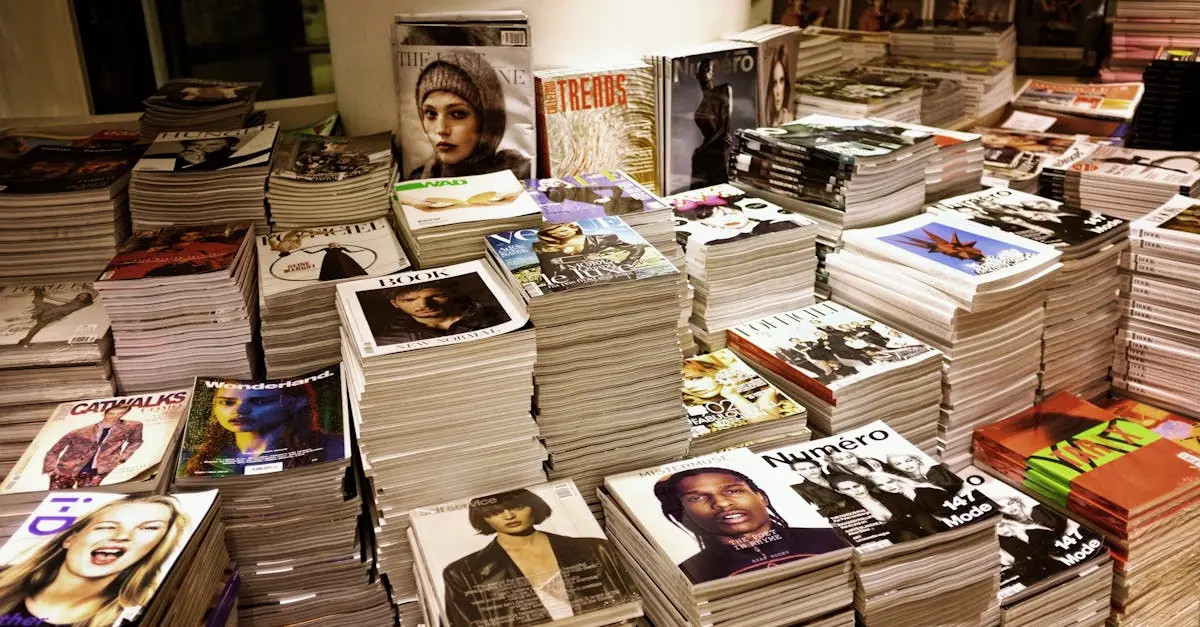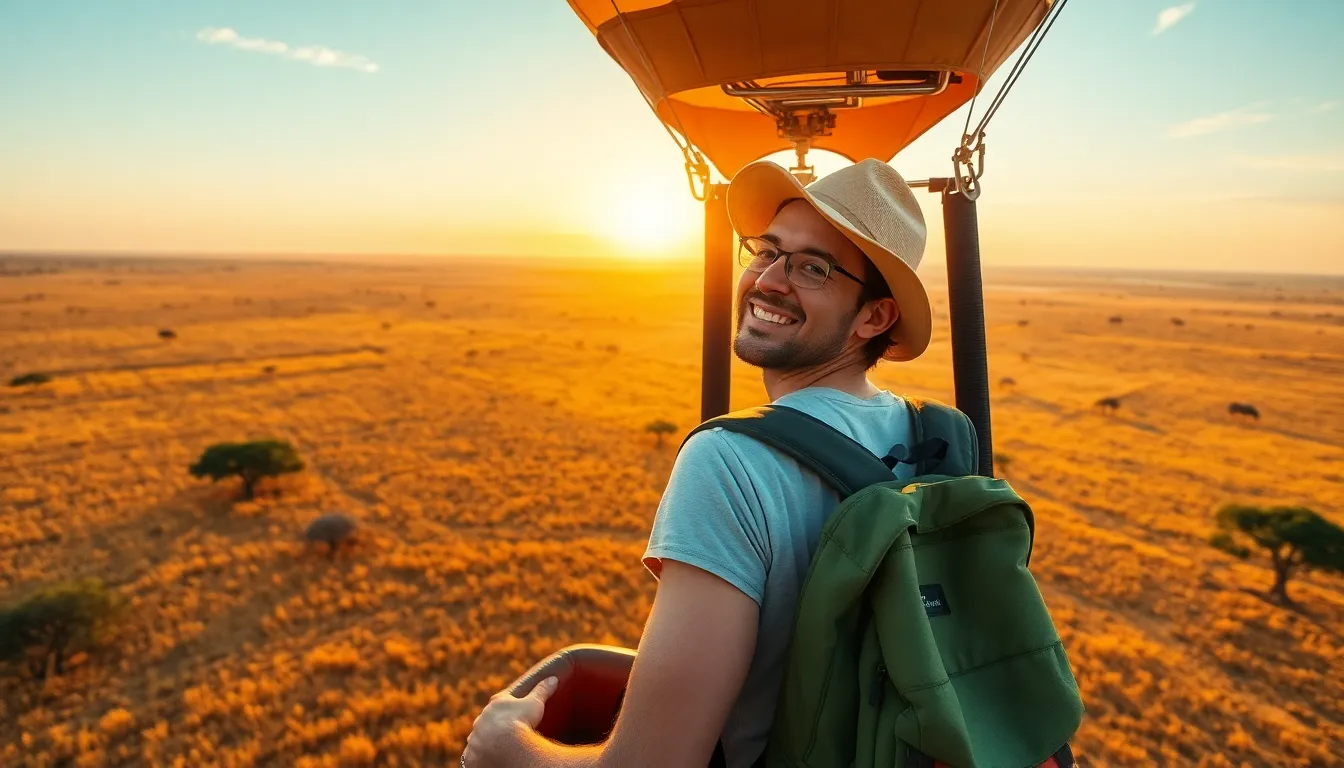Fashion is a wild ride, isn’t it? One minute, everyone’s rocking bell-bottoms and tie-dye, and the next, it’s all about skinny jeans and athleisure. The evolution of fashion trends reflects not just personal style but also cultural shifts, technological advancements, and even political movements. It’s like a game of musical chairs, but the chairs are constantly changing shape and color.
As trends come and go faster than a catwalk model can strut, it’s fascinating to see how past styles influence today’s wardrobes. From the roaring twenties flapper dresses to the grunge vibes of the nineties, each era leaves its mark. So buckle up and get ready to explore the quirky, sometimes baffling journey of fashion trends that keeps us all guessing—and occasionally cringing—while trying to find that perfect outfit.
Table of Contents
ToggleHistorical Origins of Fashion Trends
Fashion trends originate from a blend of cultural influences, historical events, and social movements. These trends evolve over time, reflecting the values and aesthetics of different societies.
The Influence of Different Cultures
Cultures significantly shape fashion, bringing diverse perspectives and styles into the mainstream. For instance, the fusion of African textiles with Western designs creates vibrant, unique garments admired globally. Asian aesthetics, particularly from Japan and India, influence patterns, silhouettes, and materials found in contemporary fashion. Traditional garments often inspire modern interpretations, showcasing how history and cultural significance impact style today. The emergence of streetwear also highlights cultural exchanges, as urban environments contribute to the evolution of everyday attire.
Notable Fashion Eras
Fashion eras mark significant shifts in style and social attitudes. The 1920s, known for flapper dresses, emphasized freedom and rebellion against earlier norms. The 1960s embraced youth culture, featuring bold colors and psychedelic prints that defined an era of exploration. The grunge movement of the 1990s reflected a more casual, anti-establishment attitude, influencing popular brands. Each era’s unique characteristics highlight how societal changes affect personal expression through clothing. These notable periods in fashion history continue to resonate today, inspiring modern designers and trendsetters.
Key Factors Influencing Fashion Trends
Fashion trends evolve through various influences that shape personal style and societal expression. Key factors include social changes and technological advancements that play significant roles in this dynamic landscape.
Social Changes
Social changes greatly impact fashion trends. Movements advocating for gender equality have led to a rise in gender-neutral clothing. Youth subcultures often dictate popular styles, as seen with the emergence of skate culture influencing streetwear. Additionally, shifts in societal norms prompt re-evaluations of appropriateness, impacting choices regarding work attire and casual wear. Celebrating diversity in body types and ethnic backgrounds further inspires designers to create more inclusive collections. Past eras reflect this as well, with 1960s counterculture showcasing rebellion through fashion. Such influences drive constant reinvention in wardrobes, making fashion a powerful tool for self-expression.
Technological Advancements
Technological advancements significantly shape fashion trends. The rise of social media platforms allows trends to spread rapidly, influencing followers worldwide. With online shopping becoming increasingly popular, access to global styles has never been easier for consumers. Designers utilize technology to create innovative fabrics, enhancing comfort and sustainability. 3D printing is revolutionizing production processes, enabling unique designs that were once impossible to achieve. Virtual reality allows customers to try on clothes digitally, providing a new shopping experience. These advancements not only alter how fashion is produced but also change how individuals engage with and express their style.
Iconic Fashion Movements
Fashion movements significantly shaped personal expression and cultural identity throughout history. Each iconic era reflects societal attitudes, values, and shifts.
The Roaring Twenties
The Roaring Twenties marked a vibrant cultural renaissance. Flapper dresses became symbols of liberation, representing women’s newfound freedoms. Jazz music thrived during this period, influencing styles characterized by bold patterns and extravagant accessories. Young women embraced shorter hemlines and bobbed hairstyles, while men opted for tailored suits with wide lapels. This transformative decade set the stage for modern fashion trends.
The Hippie Movement
The Hippie Movement emerged in the 1960s, emphasizing peace, love, and individualism. Consciousness of social and political issues drove people to express themselves through free-spirited clothing. Common elements included tie-dye shirts, bell-bottom jeans, and flowing maxi dresses. Natural fabrics, like cotton and linen, gained popularity, aligning with a return to nature. Accessories, such as peace signs and flower crowns, added to the distinctive aesthetic of this era.
1980s Glam
In the 1980s, glam rock brought boldness and excess to fashion. Bright colors, flashy patterns, and oversized silhouettes defined this flamboyant decade. Shoulder pads became ubiquitous, enhancing power-dressing trends for both genders. Hair styles reached new heights, often styled with volume and wild curls. Designers like Jean-Paul Gaultier and Gianni Versace influenced popular culture, showcasing daring styles that celebrated individuality and self-expression.
The Role of Media and Celebrities
Media and celebrities play crucial roles in shaping fashion trends. They influence public perception and dictate style preferences through various platforms.
The Impact of Fashion Magazines
Fashion magazines act as trendsetters by showcasing seasonal collections and high-profile editorials. They often highlight the latest designer offerings, setting expectations for consumers. These publications provide readers with inspiration, showcasing how to incorporate high fashion into everyday life. Celebrities frequently grace the covers, lending their personal style to magazine brands, which resonates with the audience. This connection fosters a desire among readers to emulate celebrity looks, leads to new trends, and enhances retail sales.
Social Media Revolution
Social media has transformed the fashion landscape dramatically. Platforms like Instagram and TikTok allow trends to spread rapidly, thanks to influencers who showcase their looks to large audiences. Users share outfits, styling tips, and opinions, creating a dialogue around fashion that engages followers. Immediate access to diverse styles inspires global fashion trends, as regional styles become instantly recognizable. Brands leverage this exposure to connect with consumers personally, tailoring marketing strategies to meet evolving demands.
Sustainable Fashion Trends
Sustainable fashion trends focus on environmentally conscious practices that shape modern apparel choices. Brands increasingly prioritize eco-friendly methods over traditional production techniques.
Eco-Friendly Practices
Brands adopt eco-friendly practices to reduce environmental impact. Organic materials, such as cotton and hemp, make their way into clothing lines, offering alternatives to conventional, chemically-treated fabrics. Recycled textiles gain popularity as designers repurpose waste materials, decreasing landfill contributions. Additionally, water-saving technologies in production processes minimize excess usage, supporting conservation efforts. Innovations in dyeing processes allow for less water and toxic chemicals, resulting in healthier ecosystems. Certifications like Global Organic Textile Standard (GOTS) help consumers identify trustworthy sustainable options. Ultimately, transparency in sourcing and manufacturing processes enhances consumer trust in eco-friendly fashion.
The Rise of Slow Fashion
Slow fashion gains traction as consumers prioritize quality over quantity. Emphasizing timeless pieces, this trend contrasts with fast fashion’s quick turnover of inexpensive items. Consumers invest in well-made garments that last longer, encouraging a shift toward sustainable purchasing habits. Local artisans and independent designers flourish in this space, showcasing handcrafted techniques and unique aesthetics. Collaboration with ethical manufacturers supports fair labor practices and community development. By promoting second-hand shopping and clothing swaps, slow fashion encourages circularity. Mindful consumerism leads to more responsible wardrobe choices, reflecting a broader commitment to sustainability in fashion.
Fashion trends are a dynamic reflection of society’s ever-changing landscape. They encapsulate cultural influences and technological advancements while showcasing individual expression. As styles evolve from one era to the next, they reveal deeper insights into societal values and norms.
The journey of fashion is not just about clothing; it’s a narrative of identity and creativity. With the rise of sustainable practices and inclusivity, the future of fashion looks promising. This continuous evolution ensures that fashion remains a powerful medium for self-expression and cultural commentary. The quest for personal style will always adapt and thrive in response to the world around it.



